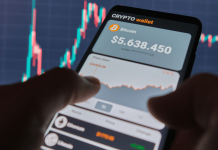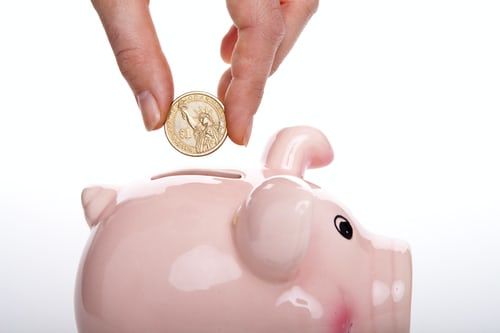Thinking about purchasing a Ledger Nano Hardware Wallet? Browse their official website: https://www.ledgerwallet.com/r/67ef
Want to join coinbase to begin your crypto journey? Here’s a link to get free $10: https://www.coinbase.com/join/558828dc34383271a500003b
Step up your game and Check Out Binance too: https://www.binance.com/?ref=10080191
Join the Robinhood app and invite your friends to Robinhood and win free stock. Here’s my invite: http://share.robinhood.com/heidic1
Find me on Steemit: www.steemit.com/@heiditravels
Twitter: @blockchainchick
Instagram: @hheidiann
If you’re looking for an app that tracks the price of BTC & ETH and many other coins, check out the CoinView App: https://play.google.com/store/apps/details?id=br.com.freeflowt.coinview
LINKS FOR ADDITIONAL READING FOR THIS VIDEO & ALL INFO IN TEXT DOWN BELOW
Pegged cryptos, their beginnings, downfalls and comebacks: https://cryptoinsider.com/pegged-cryptocurrencies-credibility/
Check the number of coins in circulation: www.omnichest.info
See Tether’s reserves: https://wallet.tether.to/transparency
Tether FAQ: https://tether.to/faqs/
BitShares Pegging System: http://www.devtome.com/doku.php?id=bitshares_-_market_pegging
BitShares Website: https://bitshares.org/
I’m going to begin by stating the obvious but bear with me. Bitcoin and cryptocurrencies in general are volatile. It’s going to be this way until a wider adoption of cryptos is achieved. Volatility is the result of a small market that is easily influenced by the movements of buyers and sellers. As the market grows, prices stabilize and everything gets boring. In the meantime, there are some cryptos that are designed to be the refuge from the storm.
The key for pegged or tethered cryptocurrencies is the reserves that the crypto has of the other, more stable currency. So for USDT, also known as Tether for example, on their website you can see how much USD they have in their reserves. The amount in their reserves should closely match the amount of tokens they have in circulation. This is to ensure liquidity for their user base and therefore also ensure the value of their crypto.
For the sake of transparency they show their reserves on their website, however, whether this number is realistic or not is yet to be confirmed. But it seems at the very least they aren’t employing the tactics of fractional reserve banking.
In the past, Tether did experience illiquidity when the banks that they work with obstructed their ability to access fiat currency. This led to Tether dropping from their standard $1 per coin value down to around $0.90. A lack of liquidity isn’t the only thing that can damage the price of pegged cryptos.
The thing about the free market is that if it is pushing for a certain price and a pegged crypto is meant to resist this price action, sooner or later the peg will fail and it can result in dramatic devaluations.
There are tokens that exist that are pegged in a way that doesn’t require them to have reserves of the actual fiat, or commodity. I’m talking specifically about BitUSD, the pegged cryptocurrency available on the Bitshares exchange. BitUSD uses a pegging system unique to Bitshares that is also somewhat of a trademark for things built by Dan Larimer in that they are complicated to understand, yet they work.
















THANK YOUU
I think so too !! is now rising 3519.05
hello always
beautiful
Hi Heidi , following up from our email, NU Entertainment’s pre-ICO, http://www.nuearthlotto.org
NU GOLD Tokens on sale. 1 BTC receive 500,000 NU GOLD Tokens valued at US$5K. Deal subject to change. NU Earth Lotto, best new lottery game in 2,000 years with 2 Games in 1. Best regards NU Founders
hello Heidi you think about the collapse of Bitcoin?
What about Nubits ?
Enjoy Cape Town Heidi. Thanks for visiting us here in South Africa.
Where in the world is heidi??
Great video! Totally agree that the volatility will decrease as more people enter the market but I feel like we also need to start moving towards more usage of the coins as utilities rather than just massive trading back and forth. It's preventing the market from growing and just causing the crashes/dips/corrections.. whatever. The general public need to see that cryptos can in fact be used for real world purchases of goods and services. When that happens, I think it will solidify that cryptos are here to stay and the market will stabilize.. Just my thoughts
I moved a good deal of BTC into bit.USD when it got near 5k. Sitting on it until the dust settles during this correction and will move it back into BTC. I don't trust USDT, at all, it's a pretty shady operation. One look at the fine print tells you all you need to know. People don't understand bit.assests, so they avoid using them, which is unfortunate. It's a solid system. Good video.
Nice. This is what I want to do, invest/trade crypto and travel full time.
that view is breathtaking
I respect your videos and am glad you lay this out straight for us… Does Crypto Tips have a FB page?
Heidi – you do a great job. Please let us know where you are "reporting from." I liked it when you told us you were in Kuala Lumpur. Please do that each video.
The only other recommendation is to have a summary slide at the end which recaps your major points. Again, awesome job Crypto Tips.
Stop being so cute damnit!
ha, was just going to ask you if you were in CapeTown. You are definitely a jet-setter. Is the travel for work or just a lifestyle decision to explore the world while trading cryptos.
It's the other way around, USDT is strong and safe when the total marketcap drops. They need reserves (fiat) when the market grows. There is no real guarantee when there is no real reserve. The bit something holds value cause nobody buys it so there is also poor liquidity (many huge price spikes, instability). Who do you work for? Who records these videos? There is enough FUD in the market.
Go into FIAT
Can you go into a little more detail about BitShares? Just even via comments. You say it holds its price, yet looking at the charts it looks to move around quite a bit. Might be confused by your info. Thank you!
Are you in cape town ?
Great info.
Uau! What a place!